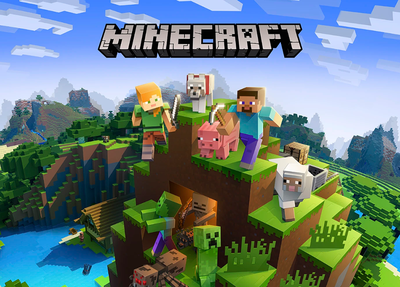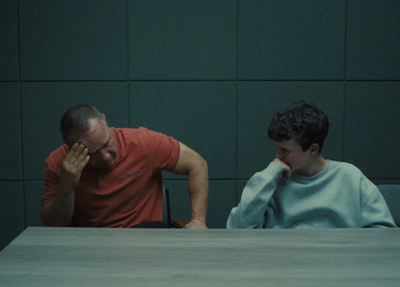The Porn Series – Part Two: Sexual Desire vs Sexual Fantasy
Caitlin on Oct. 19, 2021
Is sexual fantasy the same thing as sexual desire? Does it matter? As part of our blog series on porn, this blog explores sexual fantasy and sexual desire in relation to pornography.
Content warning: This blog contains frank discussions about sexual fantasies, desires, and pornography. These can be uncomfortable or distressing topics for some people. Please see our help information at the bottom of this blog and reach out for help if needed.
Is sexual fantasy the same thing as sexual desire? Does it matter? As part of our blog series on porn, this blog explores sexual fantasy and sexual desire in relation to pornography.
Sometimes people see things in porn and feel sexually aroused, but at the same time might feel a bit ick or uncomfortable, or even nervous, guilty, or ashamed. They might want to try it in real life and wonder about how to introduce the idea with a partner, on the other hand it might not be something they want to do at all.
This can sometimes be confusing or worrying, especially for young people who lack experience – but being turned on by something in porn doesn’t always mean we’d enjoy it or want to do it ourselves. This is why it’s important to understand that desire and fantasy are different.
Let’s take a closer look.
What is sexual fantasy?
Sexual fantasies are mental images or thoughts that make someone feel sexually aroused. This could be prompted by seeing or reading something, for example seeing something in porn. People might also deliberately think about a sexual fantasy for reasons like wanting to get aroused or when their mind just goes wandering. But sexual fantasies can also surprise us by popping into our minds at random.
The defining feature of a sexual fantasy is that the thought or idea is sexually arousing to the person thinking about it. However, just because something turns you on it doesn’t necessarily mean you want to do it in real life.
What is sexual desire?
Sexual desire is a motivation or interest in some kind of sexual activity. A sexual desire is something that you actually want to do. It’s common for people to fantasise about these things and sexual fantasy and sexual desire can overlap, but again, people also fantasise about things they don’t want to do or wouldn’t necessarily enjoy.
Sexual fantasies play out in someone’s head, but acting on a sexual desire can often involve other people. Clearly that desire has to be mutual, and needs to include open communication and enthusiastic consent.
How does porn fit in?
Porn often involves performers acting out sexual fantasy scenarios. These might range from ridiculous and ‘fantastical’ scenarios to content that is more realistic and can be highly disturbing at the more extreme end. More common are scenarios that some might find arousing as a fantasy, but might be harmful, risky or problematic in real life. A lot of ‘step-porn’ falls into this category. In our content analysis research we found that 46% of the most popular videos on a well-known website involved some kind of ‘step’ or family themed narrative.
That stat might seem daunting, but let’s unpack this a bit. Fantasy often involves some kind of taboo element that people wouldn’t expect to happen (or want to happen) in real life. In this sense the current trend in ‘step-porn’ content could be compared to something like the pizza delivery guy or repairman trope. Judging by the stats a lot of people are clearly aroused by this scenario as a sexual fantasy, but this doesn’t mean they have any interest in sex between family members in real life.
Like other forms of entertainment such as reading and watching films – porn can be seen as an escape, separate from real-life, a fantasy. Much like boxing fans might have no interest in getting into the ring, and most horror film aficionados wouldn’t enjoy, say, being stalked by a killer clown.
Does that mean it’s harmless?
No. For one thing, an adult might have the knowledge and experience to understand this sort of content as erotic, ‘taboo’ fantasy, but even the most popular or ‘mainstream’ content can be highly problematic from the perspective of young people learning about sex, sexuality and respectful relationships. And the younger someone is, the less information and experience they have to understand the fictional scenarios commonly shown in porn.
Another problem is that some ‘sexual fantasy’ scenarios in porn go well beyond what we’ve discussed above, and this can cross the line to actively promote and eroticise sexual assault and the suffering of others. That can be dangerous for all kinds of people, particularly those who might have a predisposition towards sexual violence and aggression – regardless of their age or experience.
Feeling uncomfortable?
The thing is both sexual fantasy and desire are a normal part of life. While they might not be the same thing, this isn’t always obvious and the line between them can get blurred.
This can be confusing and sometimes distressing. Some worry that it could influence their own thoughts or behaviour – for example acting in an aggressive way towards a partner. It’s important to remember that porn isn’t going to have that kind of influence on everyone who watches it, but for some people who are at risk of behaving in a sexually harmful or aggressive way porn has the potential to increase this risk. It’s good to be mindful of this for yourself and others around you. Whether you’re scrolling online or introducing something in the bedroom, remember to always approach things with consent and safety as your top priorities.
Whether it’s a thought or idea, or something you’ve seen in porn, it’s not unusual to sometimes get turned on by something that doesn’t sit right with your values and beliefs about sex, relationships and how to treat others. It’s okay to feel uncomfortable about this, and if you’re worried about yourself or someone you know it’s a good idea to reach out for a bit of support.
Help information
Negative or sensitive content can make us feel not great. It is okay to not be okay. Take and break and talk to your friends or whānau. Don’t know who to talk to? Free call or text 1737 for more support.
Safe to Talk is a sexual harm helpline available for non-judgemental 24/7 support, call 0800 044 334 or text 4334.
Subscribe to our blog
Stay up to date with the Classification Office blog.


